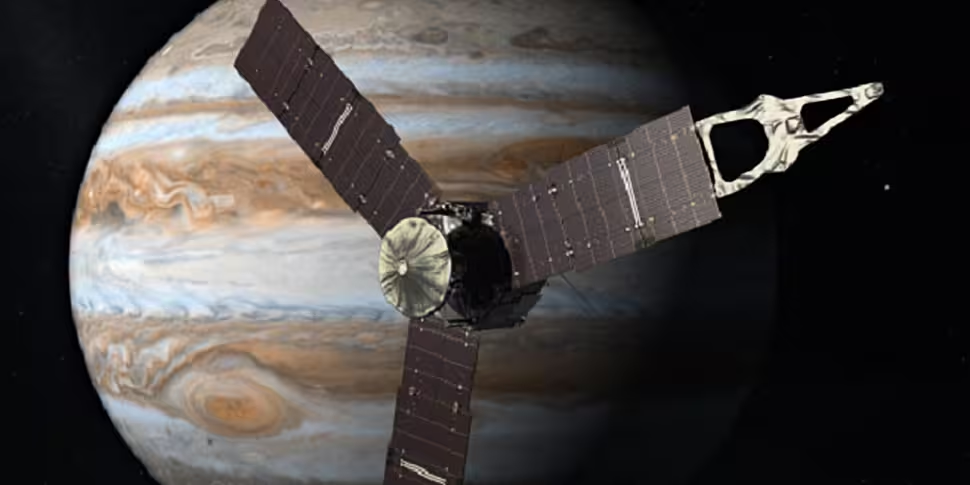NASA's Juno space probe has successfully entered orbit around Jupiter, the US space agency announced.
"Welcome to Jupiter," a commentator announced as loud cheers erupted at NASA's Jet Propulsion Laboratory in Pasadena, California.
Teamworkâ¤ï¸! From #Jupiter to Earth: thanks, team for guiding me into orbit. And now… SCIENCE https://t.co/4tR0S3XwyD pic.twitter.com/17Bia2UTkR
— NASA's Juno Mission (@NASAJuno) July 5, 2016
The unmanned spacecraft began orbiting the largest planet in our solar system at 4.53am Irish time following a five-year, 2.8 billion kilometre voyage from earth.
Ground controllers had an anxious 35-minute wait as the probe fired its main rocket engine in an attempt to slow itself down enough to be captured into Jupiter's orbit.
Had it failed, the five-year, $1.13 billion mission would have been over and the solar-powered probe would have flown straight past Jupiter and into deep space.
Scott Bolton, principal investigator of Juno from Southwest Research Institute in San Antonio, said: “This is the one time I don’t mind being stuck in a windowless room on the night of the 4th of July. The mission team did great. The spacecraft did great. We are looking great. It’s a great day.”
Announcing the news, NASA's Juno Mission account tweeted:
Engine burn complete and orbit obtained. I’m ready to unlock all your secrets, #Jupiter. Deal with it.
— NASA's Juno Mission (@NASAJuno) July 5, 2016
Juno will now spend 20 months discovering what is under the planet's thick clouds.
During 37 egg-shaped orbits, it will measure water content, its magnetic fields and search for signs of a solid core.
The probe also will hunt for water in Jupiter's thick atmosphere, a key indicator for figuring out how far away from the sun the gas giant formed.
It should also give scientists more information on Jupiter's famous Great Red Spot, a massive storm which has raged for hundreds of years.
Juno is only the second spacecraft to orbit Jupiter, following NASA's 1995-2003 Galileo mission.
As well as scientific instruments, Juno is carrying three Lego figures depicting the 17th century Italian astronomer Galileo Galilei, the Roman god Jupiter, and the deity's wife Juno.
Lego made the figures out of aluminium rather than the usual plastic so they could withstand the extreme conditions of space flight.

NASA/JPL-Caltech/KSC
When the 20-month mission ends in 2018, NASA will make Juno ditch itself in the planet's atmosphere.
That is to make sure the probe does not crash into any of Jupiter's moons, causing possible contamination.









